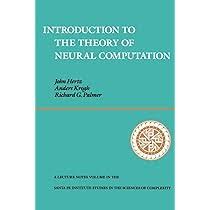Introduction to the Theory of Neural Computation: A Santa Fe Institute Perspective
Introduction
The theory of neural computation, a subfield of artificial intelligence and cognitive science, seeks to understand how the brain processes information and performs complex tasks. It draws inspiration from the structure and function of biological neural networks, aiming to develop computational models that mimic the brain's capabilities. This white paper will provide an overview of the theory of neural computation, focusing on key concepts, methodologies, and research directions as explored by the Santa Fe Institute (SFI).
Neural Networks and Their Biological Counterparts
Biological Neural Networks:
- Neurons: The fundamental building blocks of the brain, consisting of a cell body, dendrites, and an axon.
- Synapses: The connections between neurons, where electrical signals are transmitted.
- Hebb's Rule: A fundamental principle in neuroscience that states that neurons that fire together wire together.
Artificial Neural Networks:
- Perceptron: A simple model of a neuron that can learn to classify binary patterns.
- Multilayer Perceptron: A neural network with multiple layers of interconnected neurons, capable of learning complex patterns.
- Recurrent Neural Networks: Neural networks with feedback connections, allowing them to process sequential data.
Key Concepts in Neural Computation
- Learning: The process by which neural networks acquire knowledge and improve their performance through experience.
- Representation: The way information is encoded and stored in the neural network.
- Computation: The process of transforming input into output using the network's internal structure and weights.
- Emergence: The idea that complex behaviors can arise from the interactions of simple components.
Santa Fe Institute's Contributions
The Santa Fe Institute has played a significant role in advancing the theory of neural computation. Its interdisciplinary approach and emphasis on complex systems have led to several key contributions:
- Complex Adaptive Systems: Neural networks can be viewed as complex adaptive systems, capable of self-organization and adaptation to changing environments.
- Nonlinear Dynamics: The study of nonlinear dynamics has provided insights into the behavior of neural networks, including their ability to exhibit chaotic and emergent properties.
- Emergent Computation: SFI researchers have explored how complex computations can emerge from the interactions of simple neural elements.
- Neural Networks and Cognition: SFI has investigated the role of neural networks in cognitive processes such as memory, learning, and decision-making.
Research Directions and Future Outlook
- Deep Learning: The development of deep neural networks with multiple layers has led to breakthroughs in areas such as computer vision, natural language processing, and speech recognition.
- Neuromorphic Computing: The design of hardware systems inspired by the brain's architecture, aiming to achieve energy efficiency and real-time processing.
- Cognitive Neuroscience: The integration of neural computation with cognitive neuroscience to understand how the brain implements cognitive functions.
- Ethics and Societal Implications: Addressing the ethical and societal implications of artificial intelligence and neural computation, including issues such as bias, privacy, and job displacement.
References
- Hopfield, J. J. (1982). Neural networks and physical systems with emergent collective computational abilities. Proceedings of the National Academy of Sciences, 79(8), 2554-2558.
- Rumelhart, D. E., Hinton, G. E., & Williams, R. J. (1986). Learning representations by back-propagating errors. Nature, 323(6088), 533-536.
- McCulloch, W. S., & Pitts, W. H. (1943). A logical calculus of the ideas immanent in nervous activity. Bulletin of Mathematical Biophysics, 5(4), 115-133.
- Santa Fe Institute: https://www.santafe.edu/
- Mitchell, M. (1990). The complexity of artificial neural networks. The MIT Press.
Note: This white paper provides a brief overview of the theory of neural computation. For a more in-depth understanding, please refer to the recommended references and explore the extensive literature on the subject.



